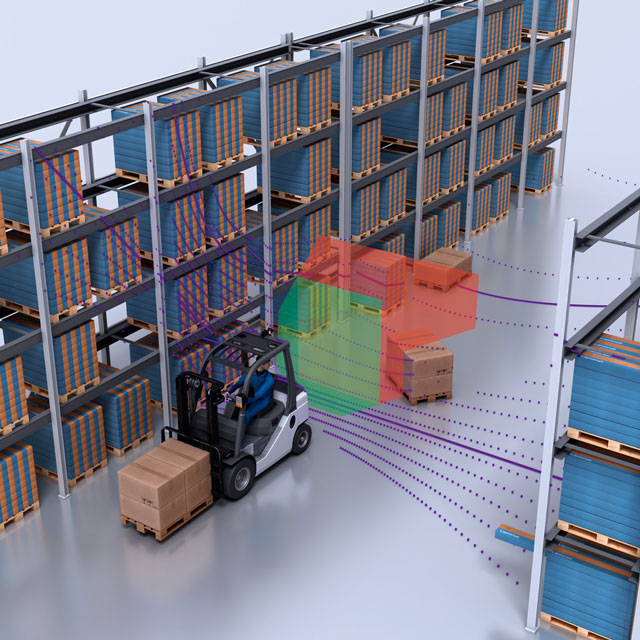
SICK has unveiled a new three-dimensional LiDAR technology sensor that it says represents a landmark advance in control of automated mobile robots (AMRs) and industrial vehicles.
The multiScan multi-layered LiDAR sensor combines floor-to-ceiling 360° environment perception with high-resolution navigation for reliable real-time localisation, mapping and collision avoidance.
Developed using SICK’s multi-echo LiDAR technology, the SICK multiScan is a compact, lightweight and rugged 3D sensor designed to maximise vehicle availability in both indoor and harsh outdoor environments. With their broad 360° x 65° field of view and 16 scan layers, the LiDAR sensors in the multiScan100 family use on-device pre-processing to output a dense 3D point cloud with 690,000 measuring points, complemented by a high-resolution 0° 2D scan plane for precision navigation.
Each multiScan arrives factory-calibrated and ready for use, whether it is specified as a standard pre-configured product or using the specially-developed Online Configurator. Machine builders and integrators can select the features they need for their application using the time-saving online platform with access to software apps and add-ons for easy customisation.
“Designed with the needs of integrators in mind, the multiScan’s ability to pre-process precision measurement data in real time with no external controller sets it apart,” explains Nathaniel Hofmann, SICK’s Market Product Manager for Measurement Systems.
“The multiScan provides a detailed 3D point cloud of its environment, so the AMR knows exactly where it is, and where any objects are, and it can update its 3D map as it travels around. At any moment in time, it is providing real-world measurements of the production floor or warehouse to make the AMR as efficient and available as possible.”
The multiScan can also be used with SICK’s Augmented Reality Assistant, SARA for troubleshooting and configuration of LiDAR sensors on Automated Mobile Robots. Diagnosis and correction of machine downtime, such as a field infringement, can be done ‘on the spot’ with a mobile phone, without the need to connect a PC.
The multiScan also filters out the false signals caused by unwanted laser reflections from raindrops, snow, fog or dust particles.

